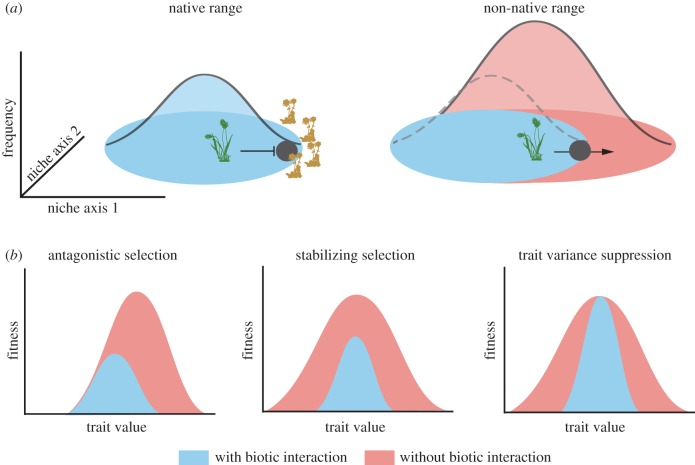Figure 2.
Eco-evolutionary model of the ecological niche as an emergent property of genetic constraints and spatial variation in abiotic and biotic sources of natural selection. (a) The number of individuals in a population (y-axis) depends on environmental variables that vary along geographical gradients (niche axes 1 and 2), for example, moisture and temperature. Additional constraints on the niche of the focal species (darker green plant) are imposed by negative biotic interactions, such as a competitor (lighter yellow plants). Escape from negative biotic interaction represents an ecological release, which increases population vital rates across a range of environments and thereby expands the ecological niche. (b) Three evolutionary consequences of relaxed biotic interactions for an individual population, measured near the edge of the range of the focal plants (black circles in (a)). Selection at this location is measured either in the presence (lighter blue curve) or in the absence (darker red curve) of competition: antagonistic selection—ecological release relaxes antagonistic selection on a trait that is also under abiotic selection (e.g. phenology) or on a genetically correlated trait (e.g. size at reproduction); stabilizing selection—ecological release relaxes the strength of stabilizing selection across a range of trait values; trait variance suppression—competition suppresses the expression of heritable genetic variation, which increases following ecological release. In the first two cases, ecological release is also accompanied by an increase in absolute fitness as negative selection pressures are removed.

